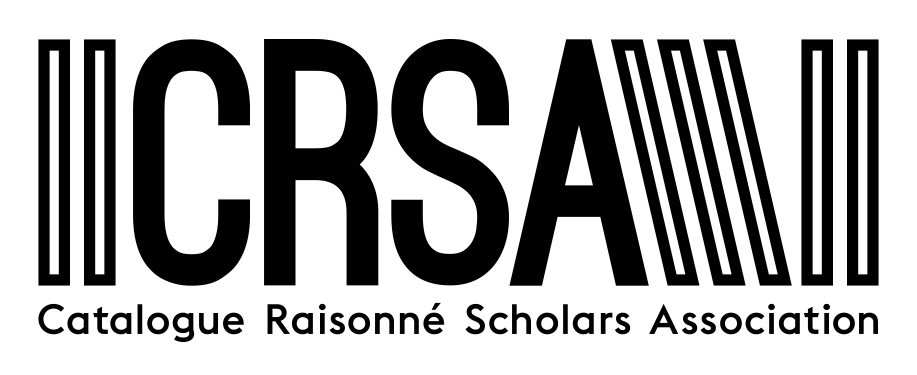Artist-made Objects of Indeterminate Status and the Catalogue Raisonné
Friday, February 14, 2:00 to 3:30pm
Location: Chicago Hilton, 3rd Floor, Williford A
Is every object made by an artist a work of art? Should we, and if so according to what criteria, include in an artist's catalogue raisonné works that exist in a seemingly provisional, unfinished, experimental, or fragmentary state? Or that may have served as designs, models, or studies for works subsequently (or not) realized in a "final" form? Is every doodle a "drawing"? Are unexposed negatives part of a photographer's oeuvre? Is an object artfully made to serve a utilitarian purpose a sculpture or a tool? How are newer media–time-based, digital, or otherwise–changing our understanding of the bounds of a catalogue raisonné? How do scholars identify, categorize, and represent oeuvres that defy easy definitions?
And are these kinds of questions and distinctions even relevant to the work of compiling complete catalogues of historical or contemporary artists' bodies of work? If so, why? Is it possible to formulate a set of "best practices" for how catalogues raisonnés distinguish between art/non-art works made by artists? Prospective panelists are invited to investigate these questions from a practical or a philosophical point of view, and to discuss them in relation to works created by artists in any media or time period.
Chair: Susan Cooke, Director of Programming, CRSA
Discussant: Chaz Evans, Lecturer, Dept. of Radio/Television/Film, Northwestern University; multimedia artist, art historian, and curator
Presentations:
On the Fate of Joseph Albers’s Color Studies
Jeannette Redensek, Research Curator, The Joseph and Anni Albers Foundation
In the course of his decades-long explorations into the interaction of color, Josef Albers famously used commercial oil paints straight from the tube and unmixed, employing paints from over 60 manufacturers. To achieve his subtle perceptual effects, he capitalized on incremental variations in pigments from different companies -- the cerulean blue from Shiva just a bit darker, the cerulean blue from Grumbacher just a bit more greenish. Among the materials remaining in Albers’s studio after his death in 1976 were over 1,000 pigment studies documenting such differences. To keep track of the variations between pigments, he applied patches of paint onto scraps of cardboard and blotting paper, and then penciled in the names of the paints and the manufacturers. These were color samples, used as studio references. The studies were set aside for future reference, or just as often discarded when a painting was finished. The pigment studies are essential research material for the Albers catalogue raisonné. They are also of value for scientific research into twentieth-century commercial pigments altogether. Although the studies were never exhibited in the artist’s lifetime, since the 1980s they have attracted the interest of curators and galleries interested in artists’ processes and conceptual analyses. The studies have acquired exhibition histories and, in some instances, provenance. What began as studio tools have become works of art. As a consequence, the scope of the artist’s catalogue raisonné has expanded significantly, while the continuity of the artist’s archive has potentially been disrupted.
In or Out? An Exploration of Uncertain Objects Considered for Inclusion in the David Smith Catalogue Raisonné
Tracee Ng, Head of Research, Estate of David Smith
This presentation focuses on problems of inclusion regarding objects of indeterminate status in the David Smith catalogue raisonné of sculpture. The talk will explore the decision-making process that has been employed in considering uncertain objects and the criteria used to establish those works that are acknowledged as sculpture. Among the categories of uncertain objects that will be discussed are objects known only from documentation; molds or models without an extant final cast; functional or design objects; fragments; and unfinished works.
Connecting the Pieces: John Altoon’s Fragmented ‘Ocean Park’ Paintings
Robert E. Hayden III, University of California, Los Angeles
John Altoon’s Ocean Park paintings are notable for their exuberantly colored, biomorphic forms which float within a white field and playfully straddle the line between figuration and abstraction. In 1962, Altoon (1925-1969) produced a series of eighteen paintings – named after the neighborhood location of his studio in Venice, California – and first exhibited them in October of that year at the legendary Ferus Gallery in Los Angeles. Despite the widespread critical acclaim for the series and inclusion in significant museum exhibitions, Altoon suffered self-doubt compounded by mental illness. Throughout his adult life, he battled periods of extreme psychosis; in 1963, a psychologist diagnosed him as schizophrenic. That same year, Altoon got into the Ferus gallery storeroom and destroyed all his paintings. After the artist’s death, fragments of the destroyed paintings entered the commercial art market. The fact that they were pieces of larger compositions was either unknown or undisclosed at the time, and today, the public institutions that hold seven of these fragments were unaware of their status. When considered with the seven extant complete Ocean Park paintings, the fragments are a case study for issues of artistic intent, institutional stewardship, art market ethics, and conservation. Is Altoon’s destructive act evidence of his disavowal of the paintings or symptomatic of his mental illness? How should a museum catalog, document, and exhibit the fragments? If restoration is possible, what are the ethical and conservation issues involved with reconstructing pieces into a completed painting?
